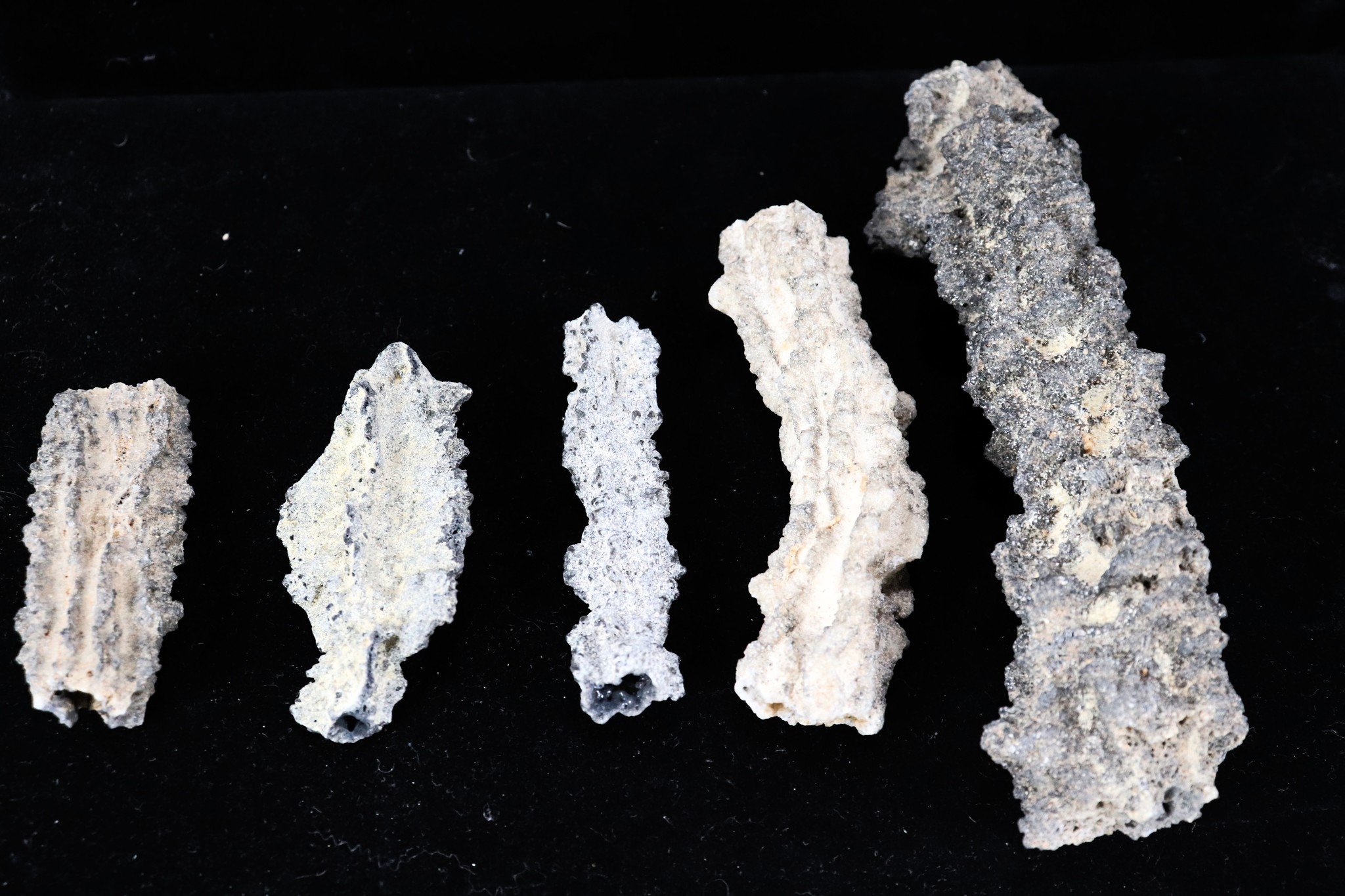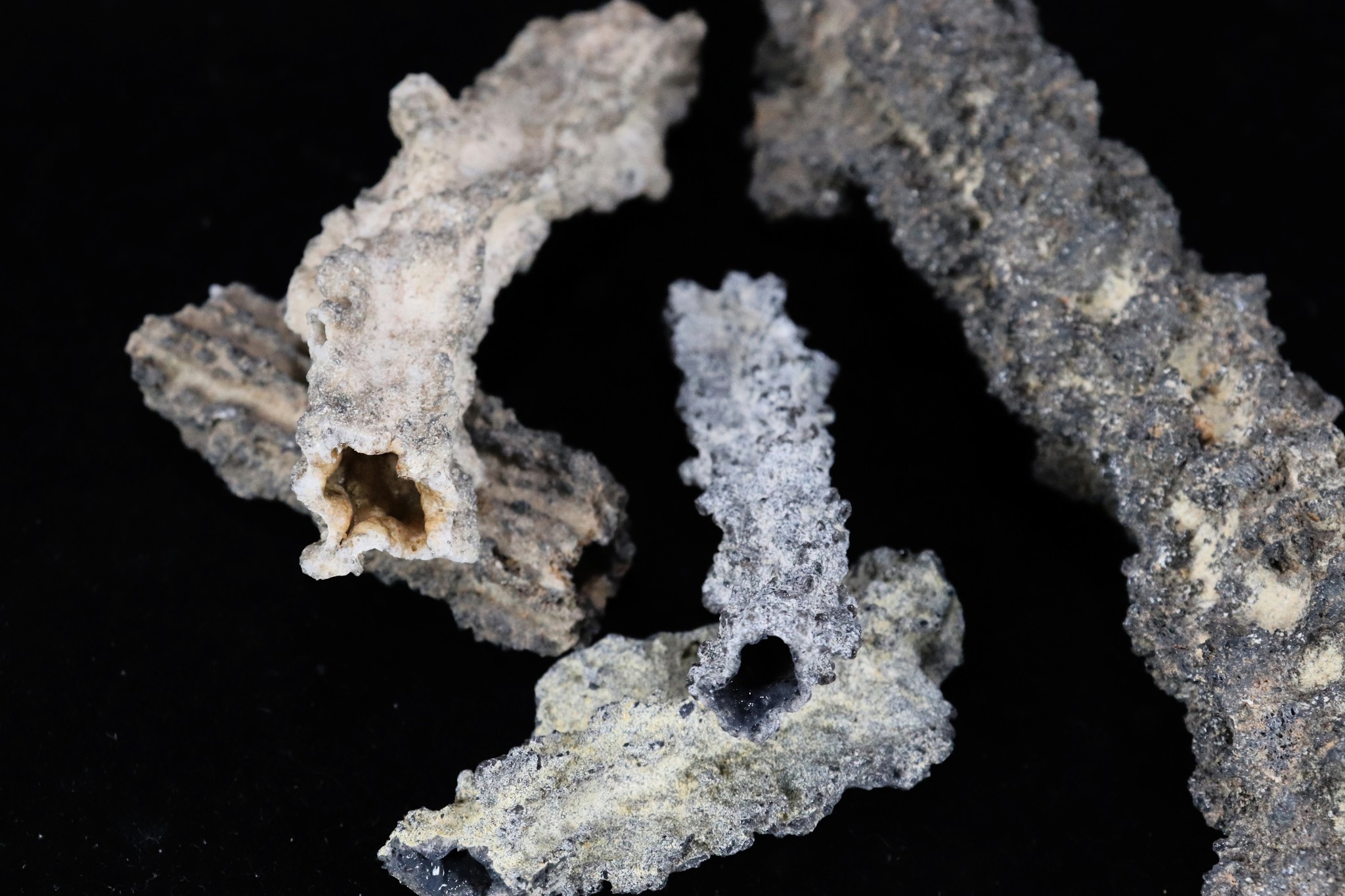Fulgurites

Fulgurite (named from the Latin fulgur for lightning) occurs when lightning strikes soil, melting the minerals in the soil into a tube-shaped cast of the shape of the lightning bolt. It is sometimes referred to as "fossilized lightning" because of this.

The shape of fulgurite can vary, but typically you'll discover them in tube-shaped formations, often the tubes will repeat like a fractal. They are usually discovered in shorter pieces due to the brittleness of the fulgurite. The longest fulgurite tube ever discovered was 16 ft long. There are two types of fulgurite, categorized by the type of soil they struck. Sand fulgurites are fulgurites resulting from lightning striking sandy soil, the other type is rock fulgurites.

Fulgurite carries the electric energy of the lighting it came from. It is energizing and electrifying, motivating one to move forward and meet personal goals. It connects you with the sky and the weather. Do you know that feeling right before a storm? Fulgurite can bring a bit of that feeling to you rain or shine.





